Android smartwatches are a complex topic. Wear OS functions, although it has several problems. Although Samsung’s Tizen-based smartwatches are excellent, they are also quite pricey and function best with Samsung’s own smartphones. Fitbit smartwatches are great for keeping you active, but they’re not so great for smart features. This is why the OnePlus Watch, the company’s own smartwatch, was met with great anticipation. But the finished product isn’t what most people wanted, and after wearing the OnePlus Watch for almost two weeks, I can’t even begin to convey how dissatisfied I am in it.
Hardware that is much better than the suggested price. Okay, let’s avoid getting off to a bad start. The first OnePlus smartwatch’s hardware is by far its greatest selling point. With one conceivable exception, it really hits the fundamentals.
Any other smartwatch even remotely close to this price range will not contain the quality stainless steel used to make the chassis. The most comparable model, which costs $199 and is made of aluminum, is the original Galaxy Watch Active. With its thin shell and tactile buttons, the OnePlus Watch has genuinely superb craftsmanship. The plastic belly has a slight negative impact on that, but in my opinion, that is not a major issue.
There is more good news on the hardware front as well. Due to the usage of 22mm spring pins, you may easily swap out the provided silicone band for another one if you’d prefer something else. With a brilliant panel and superior 2.5D glass that feels incredibly smooth to the touch, the display is also a winner. Although the display bezels aren’t very thin, they have a cool CD-like pattern to offer some flair. Overall, the design is pretty lovely and well-executed.
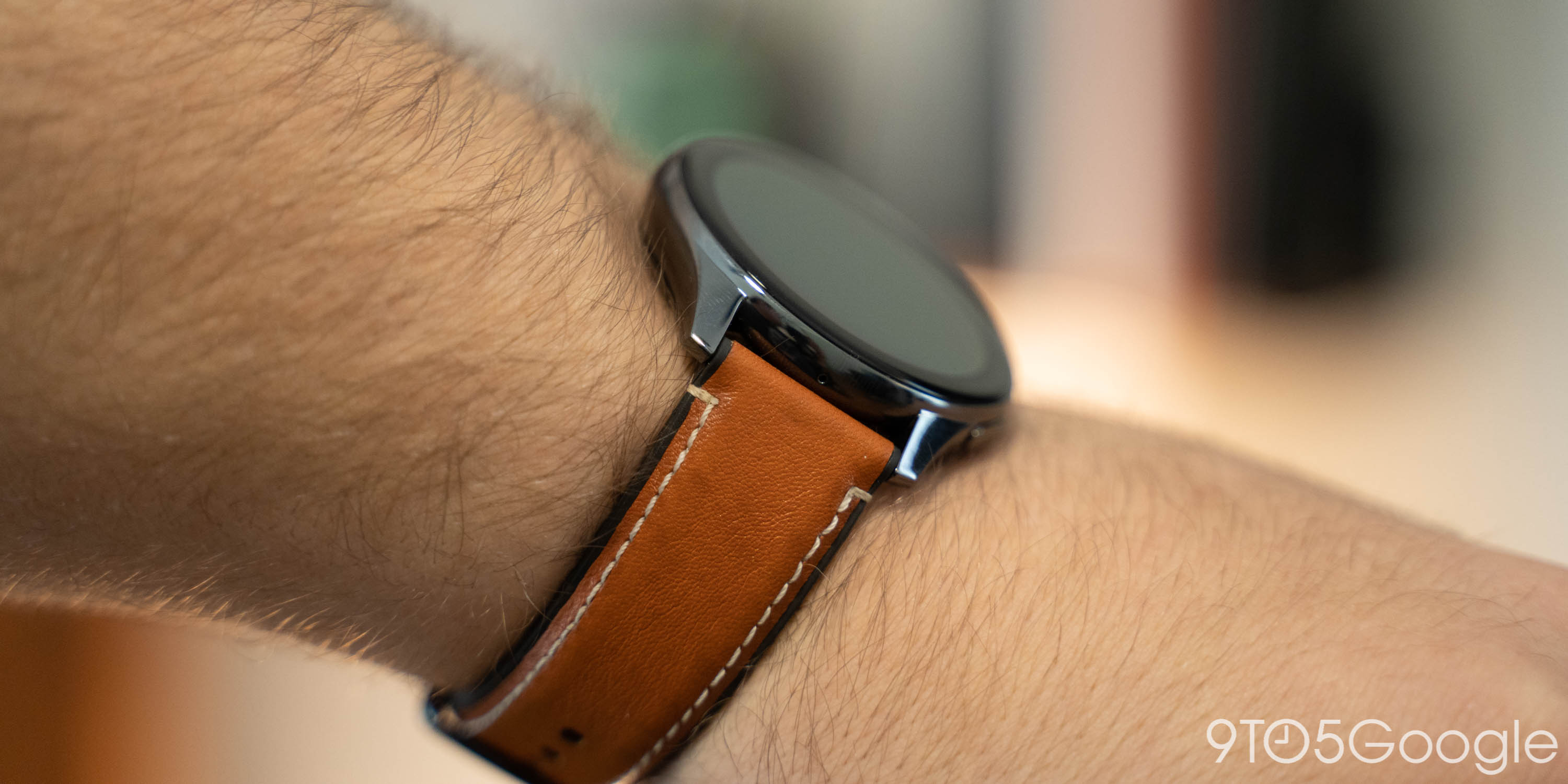

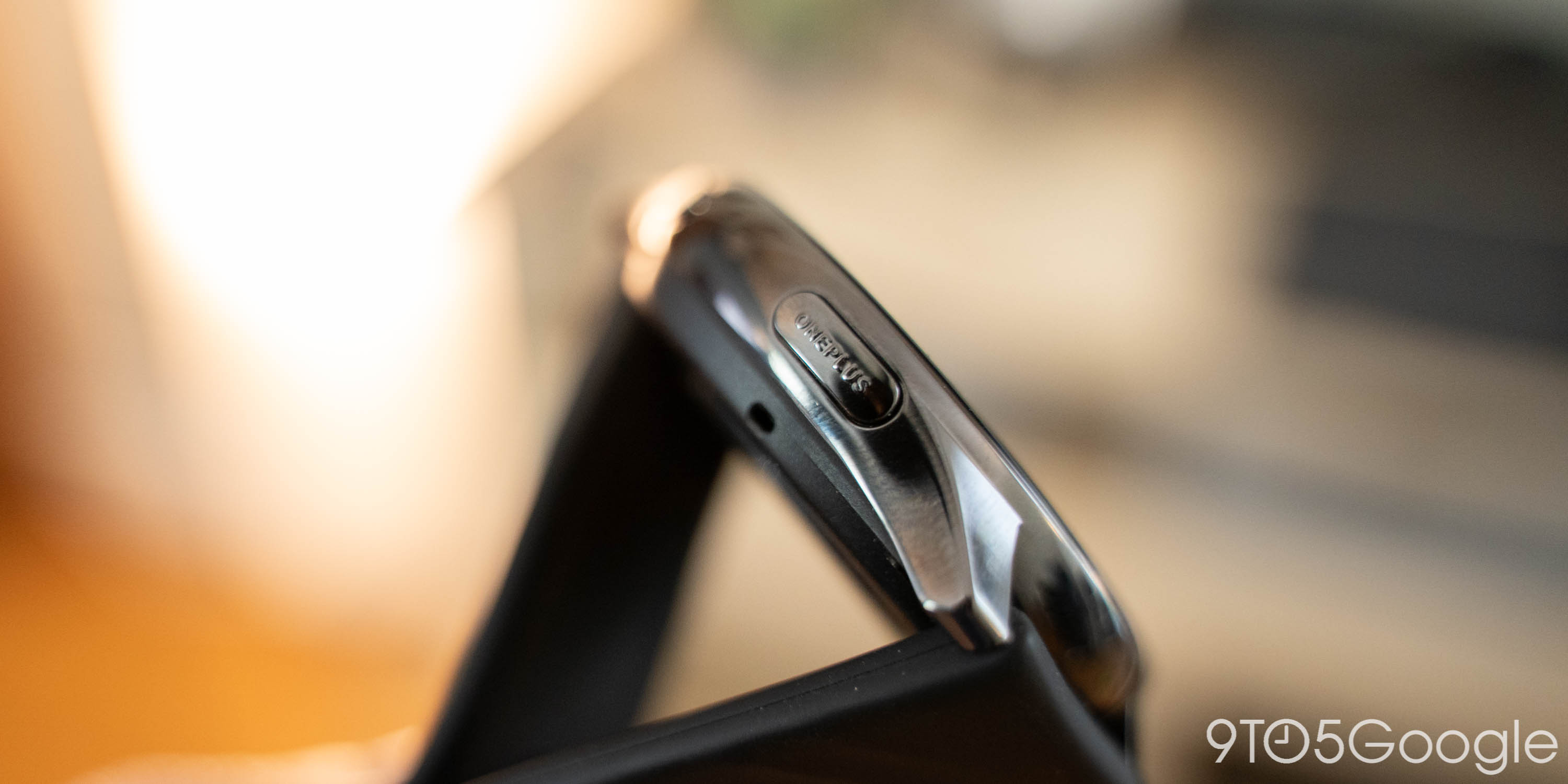
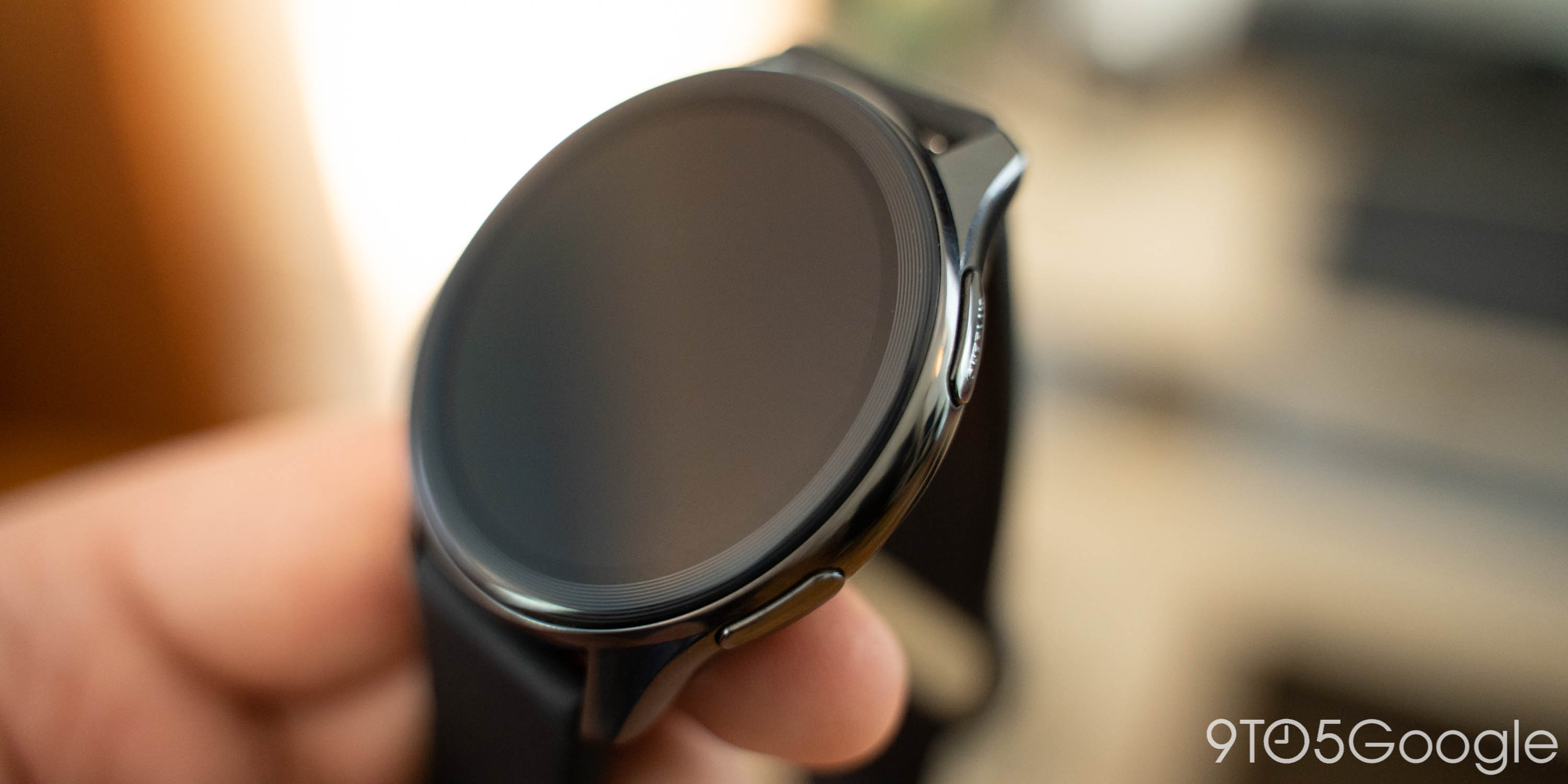
The size of the watch is the sole significant design issue. The fact that it is hitting the high end of most other wearables at 46mm does anyone with anything less than a huge wrist a disservice. My wrist, I like to imagine, is neither little nor enormous. I tend to agree with those who seek wearables that are roughly 44mm in diameter. That implies the Watch fits well on my wrist, but it would be much too large for someone else to wear it, like my wife. This is a problem that OnePlus can resolve in later versions and which also affected other first-generation smartwatches. The OnePlus Watch is being released at a time when it could profit from the majority of a decade’s worth of mistakes made by other firms in figuring out what works in contemporary smartwatches, so the justification that this is first-generation hardware feels a little hollow.
The band is also affected by this defect. As previously noted, it is comfortable, but if you prefer a shorter strap, you must request one from OnePlus in a separate shipment.

The vibration motor is another, arguably minor, thing I took problem with. It is really weak and simple to miss. Frequently, I won’t even notice when it buzzes. One morning, the OnePlus 9 Pro with which the OnePlus Watch was connected had just done a system update and was starting to sync all of the notifications from the previous night. I needed a few seconds to realize that the watch was buzzing to alert me that the notifications had arrived. There is currently no way to increase the intensity of haptic feedback.
TECHNOLOGY A COMPLETE TRAINWRECK From the moment the company made its debut in 2013 until recently, many people considered OnePlus to be among the finest in terms of smartphone software. When it came to custom apps and features, OxygenOS always made wise decisions and was always fast and clean.
Boy, have things changed.
The software of the OnePlus Watch doesn’t run on Android, Wear OS, or any other well-known platform. Instead, it makes use of a specialized version of Real-Time OS, which is the same foundation used by Fitbit, Amazfit, and other wearables in this category. That sounded like a good idea with a lot of potential, but Google has made several mistakes with Wear OS. That didn’t turn out well.
When describing the software on the OnePlus Watch, incomplete and sloppy are the first words that come to mind. Let’s begin with the layout. As we explained earlier this month, OnePlus chose to essentially copy the appearance of Google’s Wear OS, removing only a few animations and minor advantages. On the plus side, navigation is simple to understand since, regardless of your opinion on Wear OS, Google got navigation absolutely right with the platform.
On the other hand, OnePlus has produced a subpar imitation that it is attempting to make competitive. For instance, all of the notifications had the same generic bell image and had white text on a black background. Minor, but annoying, especially since almost every other smartwatch gets this properly. However, OnePlus did make an update to include new app icons just before this review was published, and sure enough, they’re distinct and a significant improvement.
As was already said, most of the software is also plain egregiously incomplete in ways that left me in awe.
The inability to design a proper digital clock is maybe one of the most notable mistakes in this. You’d think such a fundamental and straightforward component of a smart watch wouldn’t be overlooked, yet that’s exactly what has occurred. The 12-hour format, which is widely used in the United States and India, two major areas where the Watch is being sold, cannot be displayed on the OnePlus Watch until a future software update.

Speaking of not optimizing for key markets, the program uses a lot of shortened English. Pls is frequently replaced with Please, even in one humorous notification. The watch notifies you that your daily step goal has been met when you achieve it. Please continue. This is more of a lack of attention to detail and a hurried end result than a functioning issue. OnePlus had the opportunity and obligation to perform better.
Another instance of this is in the sleep tracking function, which is important for a watch that claims to run for up to two weeks on a single charge. The statistics it recorded for me are generally consistent with what I observe with the new Nest Hubs Soli-based tracking, thus sleep tracking as a whole appears to be effective. I didn’t directly compare it to Fitbit, but the results are comparable, with the exception of time spent awake, where Fitbit is known for consistently reporting larger statistics than its rivals. So what’s the issue? All of this information stays on the watch. The OnePlus Health app has a whole area dedicated to housing sleep data, but as of this writing, it just doesn’t. Although OnePlus claims a fix would be available in mid-April (i.e., last week), it is astonishing that the watch has already gone on sale with this essential feature fully broken and rendered completely worthless.
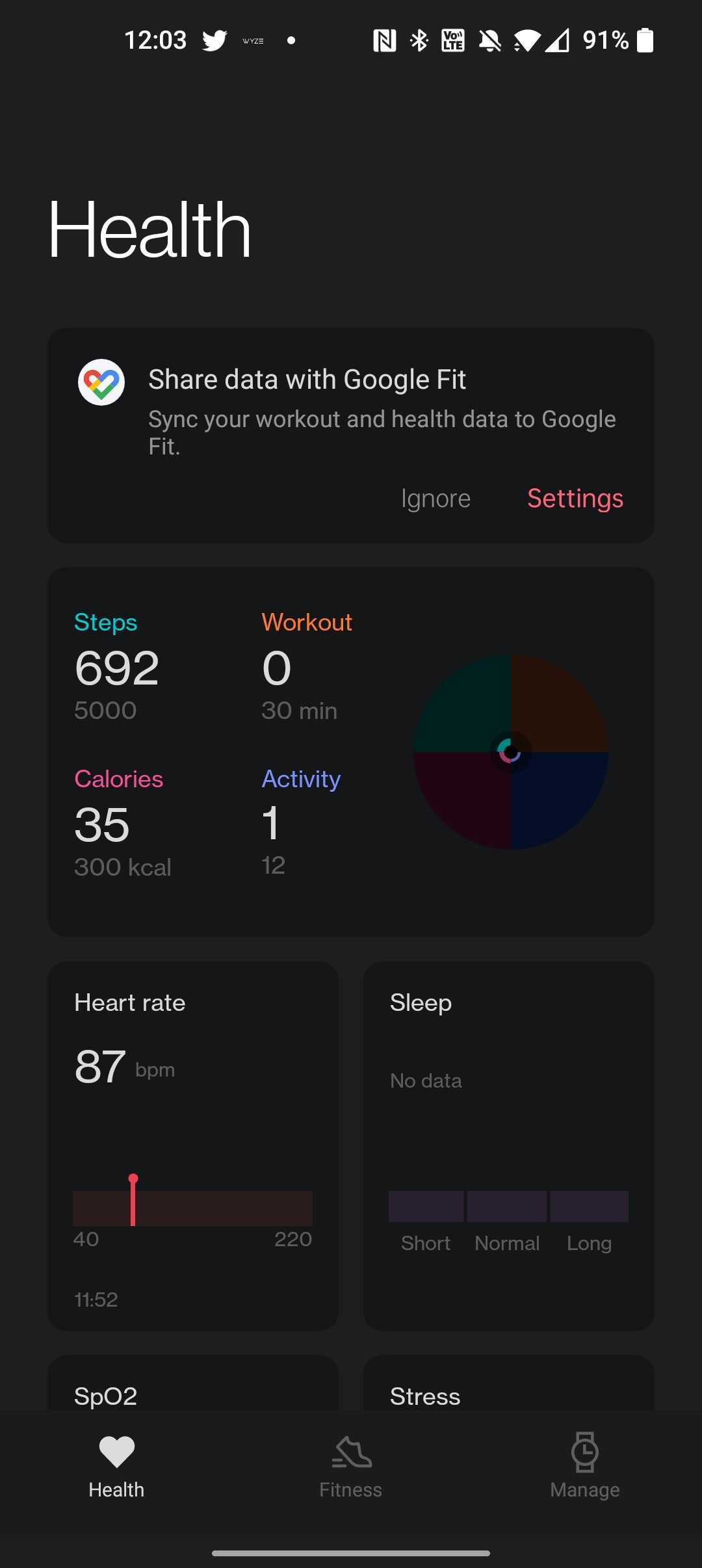
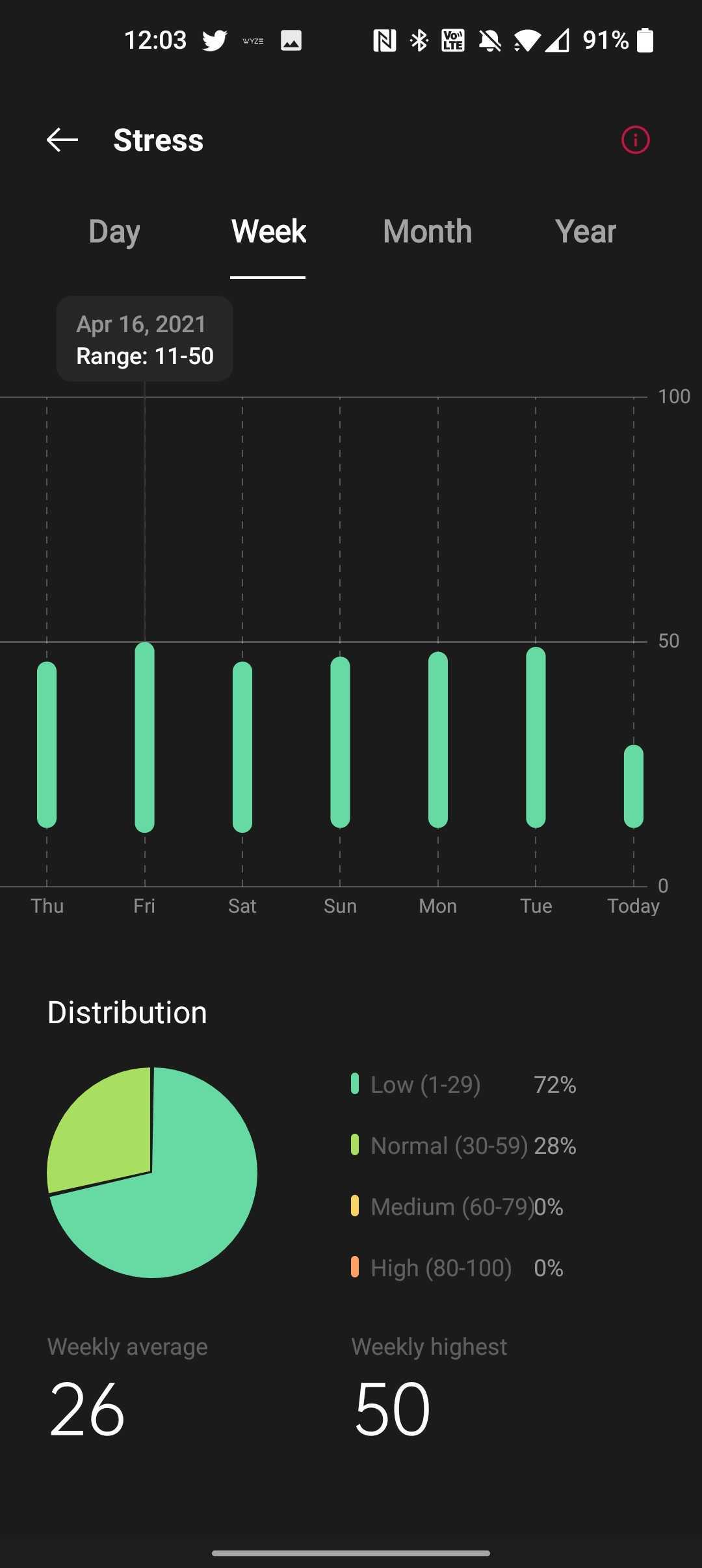
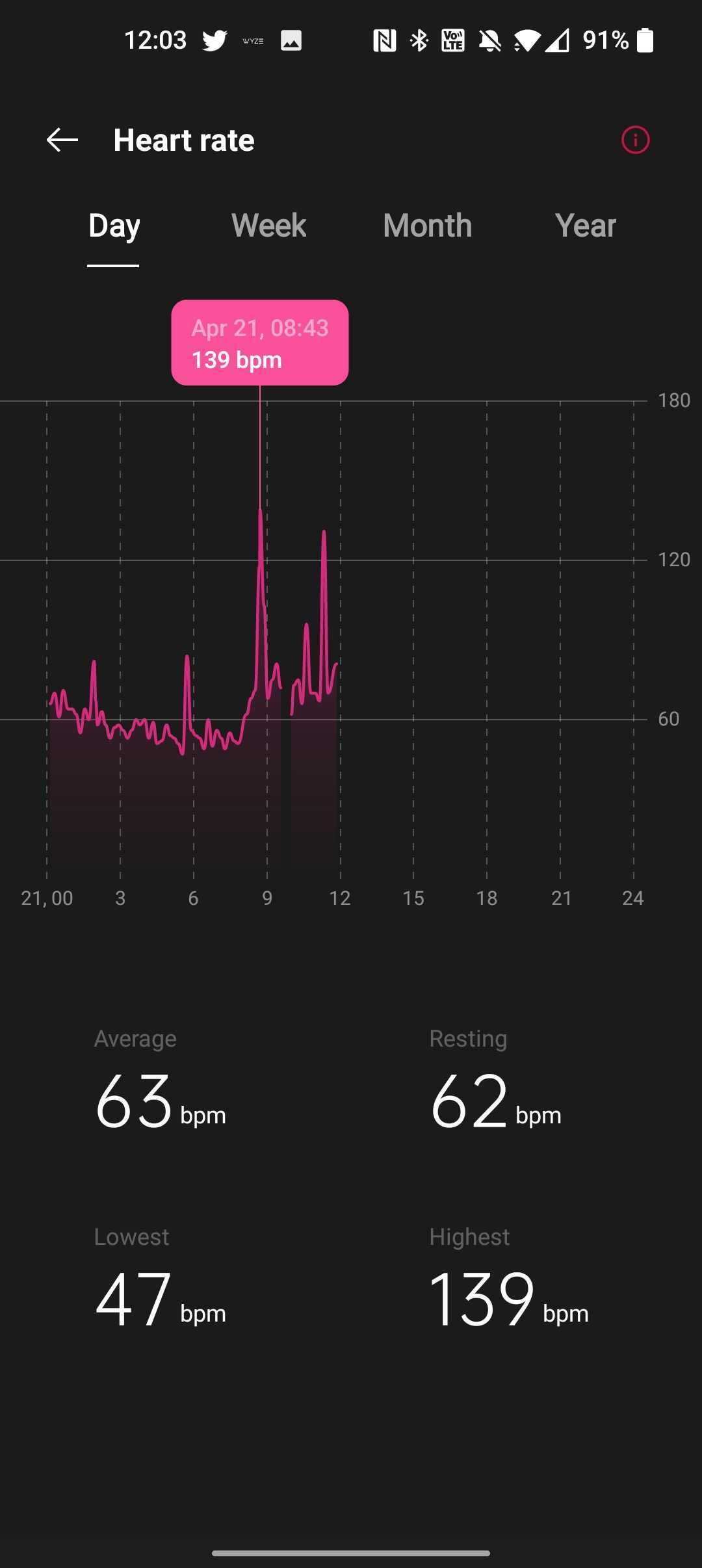

0
The health app also has a different broken section. A Google Maps-powered map that displays your run routes is available in the exercise page, but it never loads. Frustrating! Another drawback is that only a portion of the 110 training modes that OnePlus promised are included in the watch’s initial release; the remainder is scheduled to come sometime in May.
Perhaps a pattern emerged throughout much of this. Many of the issues that reviewers and early users have brought up will be addressed by OnePlus in upcoming software releases. To be honest, those updates will be a hassle. During my time using the OnePlus Watch, I installed two software updates, and each one took over an hour to finish installing. Thankfully, the second did not alter my system language from English to Chinese like the first did. That’s not ideal for a device that tracks activity and sleep. Fitbit at least offers the option to use Wi-Fi to get the update on the watch itself, which is something I noticed on my Fitbit Versa 3 while it was installing an update through Bluetooth. Despite possessing the necessary hardware, OnePlus does not.

1
The music component of this watch, which is also promoted, suffers from slow Bluetooth transmission times. The OnePlus Watch comes with 2GB of storage for music files, but you must transfer them from your phone, which can take some time, especially for larger songs. Given that it only supports MP3s—a puzzling decision in the age of Spotify, Apple Music, and other streaming services—I have a feeling that this feature will be underutilized on the watch in any case. I don’t know about you, but I haven’t listened to music from an MP3 file in at least five years.
Notably, you can manage music playback on your phone using the music app on your watch, but you’ll need to manually change the app if you want to control music playback on the phone rather than the watch.
I could continue to point out small flaws in the OnePlus Watch’s software, but I believe my point has been made. This software feels like it is still in the early phases of development because OnePlus hasn’t given it nearly enough time. Given the status of the software, it’s amazing that this product has been announced, and even more so that it’s actually shipping to customers.
But before I end this piece, I need to talk about the greater problem at hand. Because third-party developers can’t really make apps for this device, OnePlus is in charge of fixing all of the issues. There is absolutely no store for apps or watchfaces. The majority of users won’t be negatively impacted by the shortage of watchfaces because there is something for almost any style among the 50 offered, but the absence of third-party apps is quite detrimental. On my Fitbit or Wear OS watches in general, I don’t use many apps, but almost all of them are third-party choices like Spotify. On a fitness tracker, it’s acceptable to forego third-party software, but when a product is marketed as a smartwatch, it’s unacceptable.
A GOOD FOUNDATION THAT NEEDS WORK IS FITNESS It’s no secret that fitness tracking drives wearable device sales nowadays, so it seems sense that OnePlus focused on it with this wristwatch. What is the difference? Since I don’t have nearly enough time to go on walks or do appropriate exercise, I shouldn’t be the one to inquire about this, but I can speak from limited experience when compared to a Fitbit Versa 3.

2
The OnePlus Watch and my Versa 3 generally measure steps similarly, although there are some irregularities. However, in other instances, it appears to be significantly different from my typical leaning toward the low end of the spectrum. Other OnePlus Watch users have reported seeing the same thing. Gizmodo noted step counts that were inaccurate by up to 10,000 steps and some of the worst outcomes. Recently, OnePlus did release an update that is intended to fix this problem.
Only 14 of the over 110 training options that OnePlus promised would be available out of the box and the remaining ones would be added in an update. My activities for the previous month have mainly consisted of finishing yard work due to my schedule and an extreme amount of pollen. However, I was able to squeeze in a quick workout on the elliptical, one of the few exercises still supported.
In a single brief session, the OnePlus Watch detected a heart rate difference of up to 50 bpm between it and a Versa 3 on the opposite wrist. I gave OnePlus the benefit of the doubt that it was a fluke, halted the workout, and readjusted the already pretty tight band, not that the watch had deserved it. Restarting the session did, in fact, appear to fix the issue. After then, the heart rate readings on both watches were at the same location. But frustratingly, as I compared the two, the OnePlus Watch kept pausing the workout. This is probably because pausing an exercise simply requires one button press, but in my opinion, that’s problematic because accidental clicks can and do occur.
Notably, OnePlus doesn’t count the steps you take during a workout, at least not on an elliptical. For someone who is usually confined to a desk, that might be very discouraging.
The OnePlus Activities app for the watch is definitely not my favorite. With only four quadrants for steps, calories burned, activity time, and workout time, it appears complicated at first look. Only when you scroll down will you see the details for that data. This design is replicated on watchfaces, however it doesn’t actually serve the intended function well.

3
In this case, copying is acceptable; rings simply display this data more quickly. Along with that, the watch occasionally failed to record an exercise, according to something Ive heard from other reviewers. The OnePlus Health app also has a number of tracking flaws where data is either not recorded or is recorded without necessary context. The fitness software is a bit of a jumble, but OnePlus can thankfully fix the most of these issues with updates. However, only time will tell on that one, and you should never purchase this product based solely on the promise of future updates.
Epic battery life endurance The battery life of the OnePlus Watch is often cited as its saving grace, but while it is good, it is insufficient to redeem the product.
For this wristwatch, OnePlus makes a ludicrous claim that it can go for up to two weeks on a single charge, despite Wear OS only averaging a day and most people’s battery life for Apple and Samsung being between two and three days. Even the Fitbit Versa 3 and Sense only last an average of five days when used in daily life.

4
Does the assertion hold up? It may be possible, but it will depend on how you use the product, in my opinion. You’ll easily reach two weeks if you only use this for notifications and disable some of the fitness features. A bit more than a week is a more acceptable expectation for more typical use that involves several notifications, heart rate monitoring, and sleep monitoring. On a Thursday morning, I fully charged the watch, and a week later, it was in the mid-30s. The battery wasn’t completely destroyed until the following Monday, after 12 whole days. Even if it’s less than what OnePlus claims, I’ll still count that as a victory.
The battery life on this smartwatch is the best, but in my opinion, it’s not quite enough to make up for all the problems. Battery life, with some software improvements, I believe could be this product’s key selling point, however unless OnePlus addresses fundamental problems with fitness/sleep tracking and the clock, the trade-off is not worthwhile. An earlier Samsung watch or a used Fitbit might be much better for you.
While battery longevity is one thing, charging is eventually required. Although OnePlus is keen to point out that this product features its legendary Warp Charge technology, it isn’t entirely accurate. Warp Charge on this wearable is essentially just not slow, as opposed to Warp Charge on a OnePlus phone, which means charging that is literally several times as quick as the competition. On average, you can get 1% per minute. Not terrible, but not at warp speed. Given how infrequently you’ll need to charge, it won’t be a problem.

5
LAST THOUGHTS What does the OnePlus Watch’s future hold? OnePlus did, for a first attempt, get some crucial components right, including the physical design and, to a certain extent at least, some of the functions. However, as it is right now, this is a terribly incomplete product, and OnePlus has no justification for that. The business has long had intentions for a smartwatch, and they’ve been building up to the release of this watch in particular for about a year. However, the ultimate result was hurried and woefully incomplete.
Many of the errors made by the OnePlus Watch can be corrected over time and with upgrades. However, OnePlus is currently requiring everyone who wants a smartwatch to wait while the company finishes it. In the case of the OnePlus Watch, we’re not just talking about small annoyances or underutilized functions; rather, we’re talking about core functionality and essential limitations. That’s not exactly unusual, as Google’s Pixel phones frequently fix noteworthy bugs after launch.
Could the decision be overturned later? Many of the issues with this equipment can be fixed with software updates, but you should never base your purchase on that assurance. The OnePlus Watch shouldn’t be purchased by anyone right now.
There will undoubtedly be a market for this device after OnePlus fixes several of the easily fixable problems we’ve outlined here. It has a little bit more functionality than a simple fitness tracker, and its amazing battery life is incomparable.

6
I hope OnePlus’ attempt to create a smartwatch is successful. It is necessary for OnePlus users and other Android users. I had hoped that this would be all, but it isn’t. Hopefully, OnePlus will finish what it started and, more importantly, address its biggest flaws the next time around in order to do right by its users.
The OnePlus Watch is available at the companys website for $159 , but you surely shouldn’t do that just yet. Notably, the OnePlus Watch has not been available for purchase since its debut day and has only ever appeared to be in stock briefly, if at all.
When the promised updates are released, we will review the OnePlus Watch once again.
FTC: We employ automatically earning affiliate connections. More.
Check out 9to5Google on YouTube for more news:







